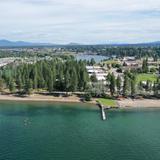- Flathead Valley Community College promotes excellence in lifelong learning by offering two-year college programs, the first two years of a four-year college degree, occupational training, and opportunities that enhance the cultural, social, and economic well-being of our students and communities.
School Highlights
Flathead Valley Community College serves 3,149 students (21% of students are full-time).
The college's student:teacher ratio of 14:1 is lower than the state community college average of 18:1.
Minority enrollment is 22% of the student body (majority Hispanic and American), which is less than the state average of 40%.
Quick Stats (2025)
- Enrollment: 3,149 students
- In-state tuition: $5,192
- Out-state tuition: $10,960
- Student:teacher ratio: 14:1
- Minority enrollment: 22%
- Source: Integrated Postsecondary Education Data System (IPEDS)
Top Rankings
Flathead Valley Community College ranks among the top 20% of public schools in Montana for:
Category
Attribute
Community Size
School Overview
The teacher population of 233 teachers has stayed relatively flat over five years.
Flathead Valley Community College
(MT) Community College Avg.
Carnegie Classification
Associate's Colleges: Mixed Transfer/Career & Technical-High Nontraditional
Associate's Colleges: Mixed Transfer/Career & Technical-High Nontraditional
Institution Level
At least 2 but less than 4 years
At least 2 but less than 4 years
Institution Control
Public
Public
Total Faculty
233 staff
90 staff
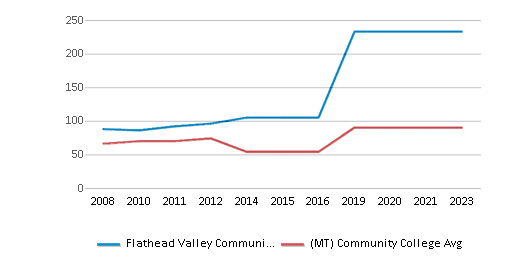
School Calendar
Student Body
The student population of Flathead Valley Community College has grown by 30% over five years.
The student:teacher ratio of 14:1 has increased from 9:1 over five years.
The Flathead Valley Community College diversity score of 0.39 is less than the state average of 0.59. The school's diversity has declined by 12% over five years.
Total Enrollment
3,149 students
783 students
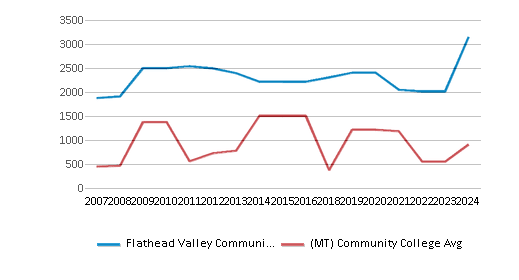
Student : Teacher Ratio
14:1
18:1
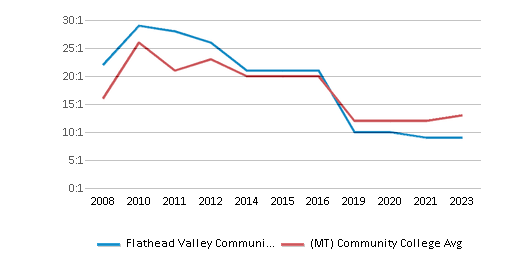
# Full-Time Students
669 students
321 students
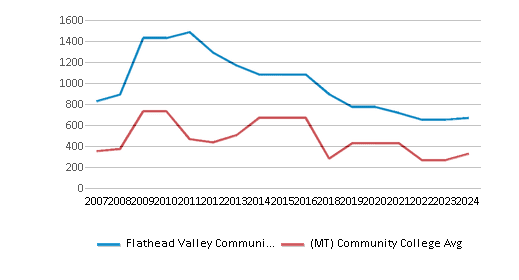
# Part-Time Students
2,480 students
557 students
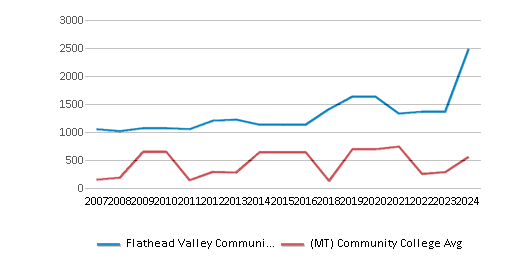

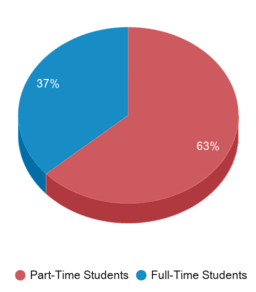
# Enrollment Undergraduate
314 students
188 students
# Full-Time Undergraduate Students
669 students
321 students
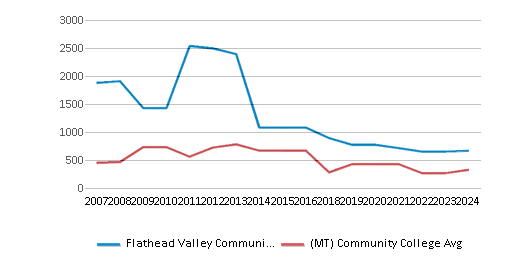
# Part-Time Undergraduate Students
2,480 students
555 students
Total Dormitory Capacity
124 students
171 students
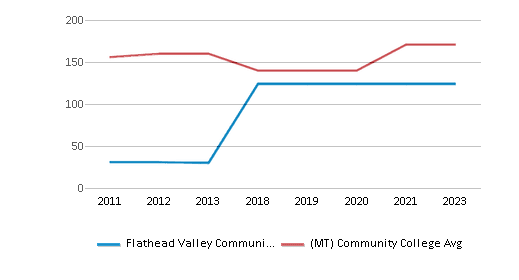
% American Indian/Alaskan
2%
2%
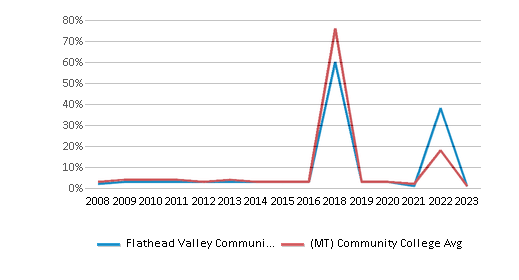
% Asian
1%
1%
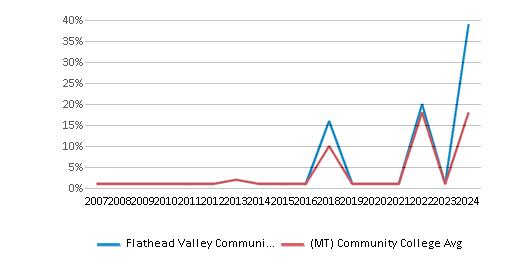
% Hispanic
4%
3%
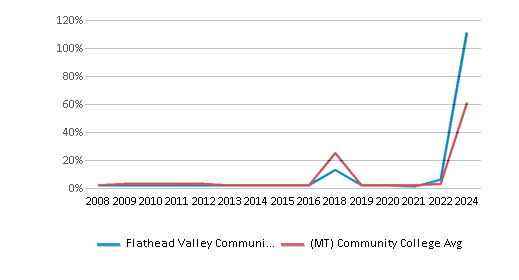
% Black
1%
1%
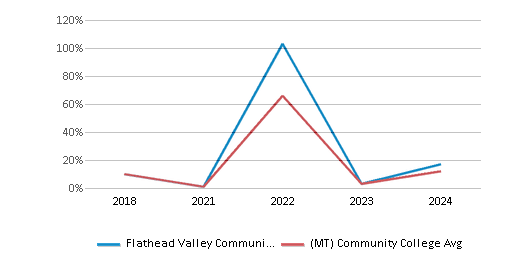
% White
78%
60%
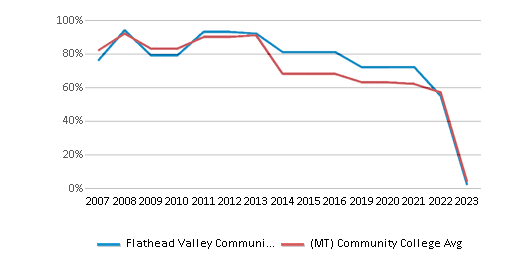
% Hawaiian
n/a
10%
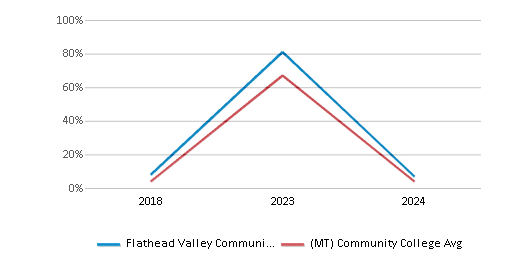
% Two or more races
3%
3%
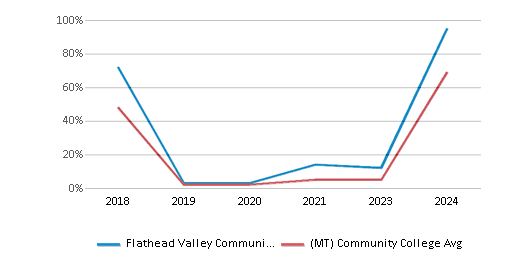
% Non Resident races
1%
1%

% Unknown races
11%
19%
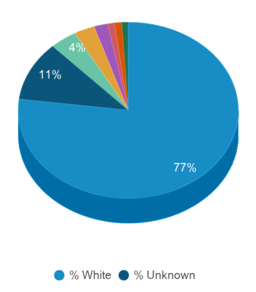
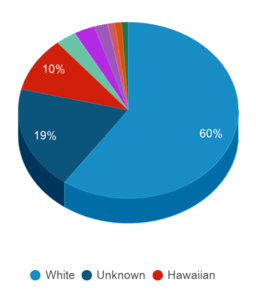
Diversity Score
0.39
0.59
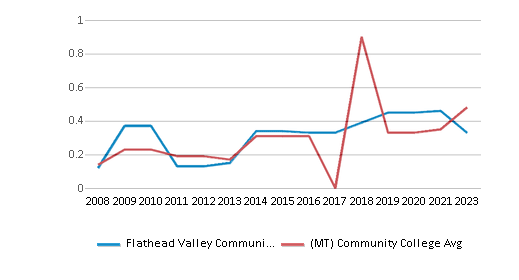
College Completion Rate (Students who graduate in less than 4 years)
0.3213%
0.3226%
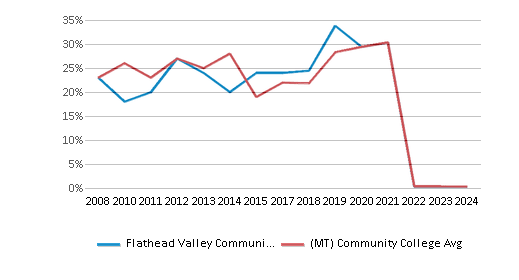
Average Graduate Earnings (10 Years)
$28,900
$34,700
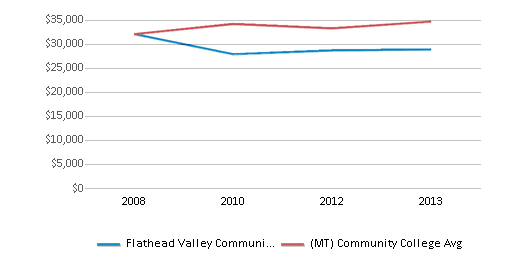
Tuition and Acceptance Rate
The public in-state tuition of $5,192 is more than the state average of $4,139. The in-state tuition has declined by 18% over four years.
The public out-state tuition of $10,960 is more than the state average of $8,788. The out-state tuition has declined by 9% over four years.
In-State Tuition Fees
$5,192
$4,139
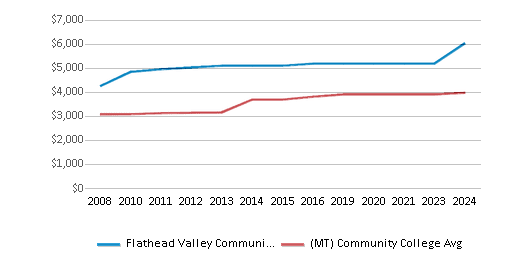
Out-State Tuition Fees
$10,960
$8,788
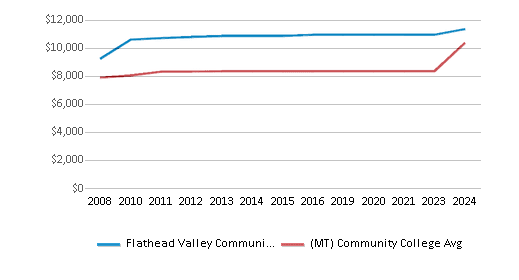
% Students Receiving Some Financial Aid
78%
88%
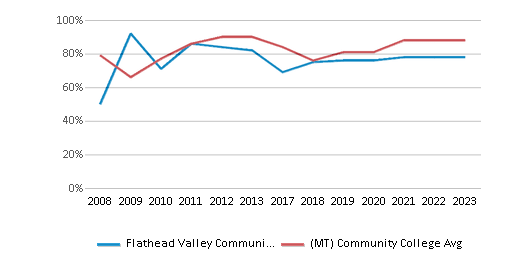
Median Debt for Graduates
$10,518
$11,966
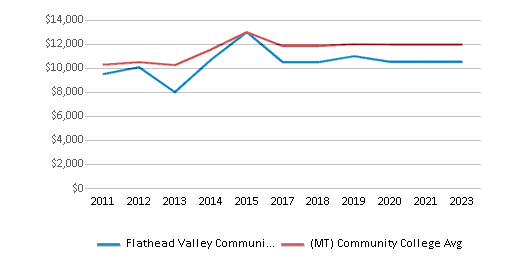
Median Debt for Dropouts
$5,500
$6,329
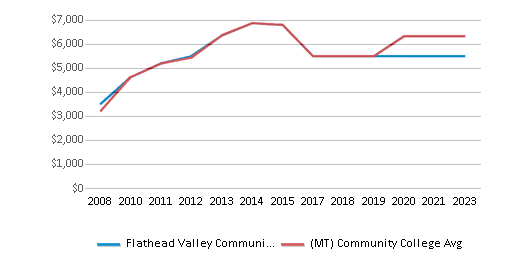
Acceptance Rate
n/a
100%
Source: 2024 (or latest year available) Integrated Postsecondary Education Data System (IPEDS) , School Administrators
School Notes
- Flathead Valley Community College is a comprehensive community college, providing college transfer, vocational-technical and community service classes for residents of northwestern Montana. We are nestled in between the Rocky Mountains and Flathead Lake, the USA's largest freshwater lake west of the Mississippi. Our award winning, one-level campus is located just minutes from Glacier National Park, the Bob Marshall Wilderness, and two of Montana's finest ski resorts. FVCC students get a great education right here in Mother Nature's finest outdoor classroom! Flathead Valley Community College promotes excellence in lifelong learning by offering two-year college programs, the first two years of a four-year college degree, occupational training, and opportunities that enhance the cultural, social, and economic well-being of our students and communities. In the 1960's, residents of the Flathead Valley recognized a need for localized higher education. Glacier College, in conjunction with Whitworth College of Spokane, provided some educational services over the course of several years. In 1984-85 the College added the Glacier Institute program in Glacier Park and the Lincoln County Campus which provides classes to the residents of Lincoln County. These programs are fully accredited by the Northwest Association of Schools and Colleges. FVCC hosts intercollegiate sport teams for men and women in soccer and cross-country running. Co-ed intramurals include soccer, tennis, basketball, volleyball, ultimate Frisbee, golf, folf, and many others. A wide variety of outdoor activities and sports are available in the area, such as downhill and cross-country skiing, snowboarding, canoeing, golfing, hiking, fishing, mountain climbing and biking, and windsurfing.
Frequently Asked Questions
How much does Flathead Valley Community College cost?
Flathead Valley Community College's tuition is approximately $5,192 for In-State students and $10,960 for Out-State students.
What is Flathead Valley Community College's ranking?
Flathead Valley Community College ranks among the top 20% of community college in Montana for: Largest student body.
Recent Articles

Obtaining Your Bachelor's Degree at a Community College
Explore the evolving landscape of community colleges offering bachelor's degrees, addressing affordability, accessibility, and workforce needs.

A to Z of Community College Certificates and Courses
From business and healthcare to technology and skilled trades, the article showcases the breadth of options available to students seeking to enhance their knowledge, develop new skills, or pursue career advancement.

What is a Community College?
This comprehensive guide explains what a community college is, its history, and its role in higher education. It covers the types of programs offered, differences from four-year colleges, benefits of attending, and important considerations for prospective students, providing valuable insights for those exploring educational options.

